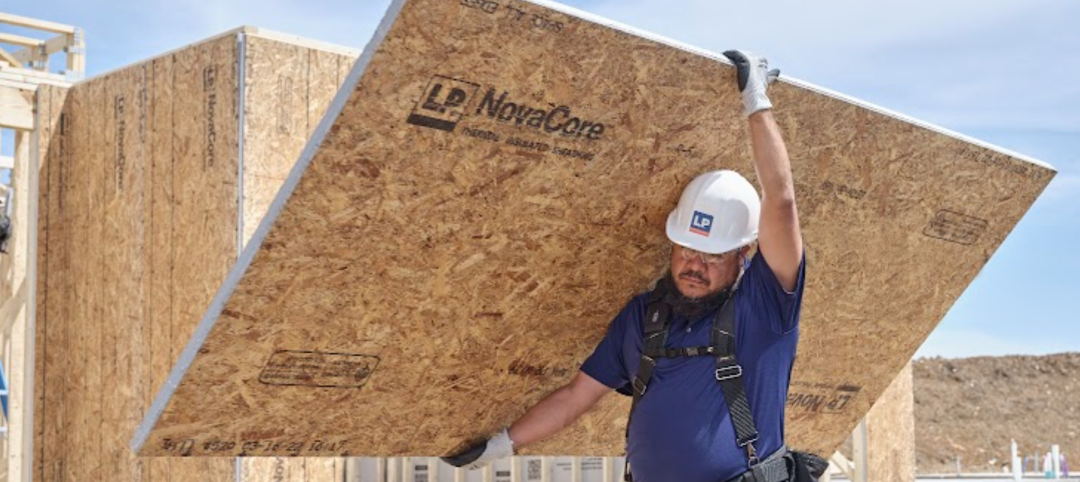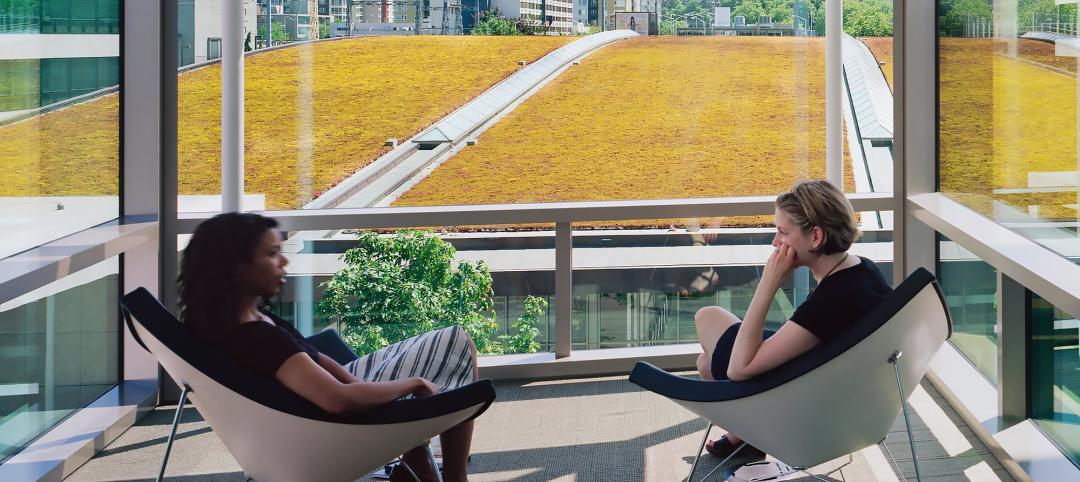 |
|
Milwaukee City Hall, built in 1896, recently underwent a meticulous reconstruction and renovation that lasted more than four years. |
When Milwaukee's City Hall was completed in 1896, it was, at 394 feet in height, the third-tallest structure in the United States. Designed by Henry C. Koch, it was a statement of civic pride and a monument to Milwaukee's German heritage. It was placed on the National Register of Historic Places in 1973 and designated a National Historic Landmark in 2005.
The massive bell tower of City Hall is supported by an armature of vertical and sloping steel trusses and beams embedded within four ornamental masonry and terra cotta gable facades. The design motif is echoed by 20 smaller gables on the east and west facades and larger cross gables at the center and north end of the building. The focus of each gable in the south tower is a white-faced, illuminated clock, just as in the main tower. Coal-fired boilers provided steam heat for the building and drive for the turbines of four DC power generators.
Over the building's century-plus life, the repetitive freeze-thaw cycles of the upper Midwest, combined with the absence of cavity walls for proper drainage, permitted water to damage the building's entire structure and skin. Over time, water from rain, sleet, hail, snow, condensation, and absorption had all but destroyed the integrity of the building's terra cotta and brick envelope, and its steel frame was slowly corroding within its perpetually damp masonry walls.
 |
|
A full building assessment of the exterior condition of Milwaukee City Hall was done before construction began. |
In 2001, the Milwaukee Common Council approved funding for a forensic investigation of the building's envelope. The New York office of Simpson Gumpertz & Heger and Wiss Janney Elstner Associates, Northbrook, Ill., sent engineering teams to assess the building's façade from top to bottom.
Both teams brought grim news. The landmark was in need of immediate and extensive repairs and restoration. Experts were brought in to discuss its restoration, particularly for the primary building materials: brick, terra cotta, stone, copper, and slate. Over a three-day period, the recommendations, protocols, and restoration techniques were compiled in a condition assessment report by WJE and evaluated by a group of experts. The consensus: “Do it right and do it now.”
A multidisciplinary team led by architect Engberg Anderson (restoration design, detailing, and project management), SGH (structural studies, forensic investigations, and design), Bloom Companies (structural engineer) and associate architect Quinn Evans | Architects (historic structures report) was selected, with the WJE report as the underlying document to determine standards and procedures.
Because Milwaukee City Hall was built at a time when “master builders” determined the selection and specification of building materials and systems, the Building Team had to work backwards to understand the cause and effect of building detail failures and to redesign precise details, using modern technology that would allow visual repetition of the original. Original materials that still had visual and physical integrity remained in place.
The best available original drawings were scanned and converted to CAD, enabling the team to replicate the original hand-drawn details of the building's sections and elevations. The plan to redetail the historic building using new methods and materials remained consistent throughout the peer review and construction process.
After general contractor J.P. Cullen & Sons, Janesville, Wis., was selected in 2004, the full Building Team—including major subcontractors— had the first of many meetings to set project goals for the restoration—a process that would continue for more than three years. Coincidentally, during that first meeting a big chunk of terra cotta fell from the south tower onto the copper roof, slid off, and crashed onto the street 200 feet below. The incident underscored the urgency of their task and drew the team together from that day forward.
Forensic, design, construction, and scaffolding engineering included installing temporary steel outrigger beams to the south tower to support the upper scaffolding. This was done to allow a reduction in setback that was required to successfully bring scaffolding closer to the upper reaches of the tower.
More than 19,000 pieces of slate and 115,000 pounds of copper were used. Nineteen hundred windows were restored, and precisely 13,404 pieces of terra cotta were replaced. Two hundred thousand pressed bricks were manufactured using techniques akin to those from which the original bricks were made. Tons of additional structural steel members were used to repair and stabilize the clock tower structure.
Eugene Matthews, a decorative terra cotta manufacturer from Northern California, and brick-making expert IXL Brick from Medicine Hat, Alb., were brought in to replicate these materials in the towers and walls. J.P. Cullen & Sons oversaw the painstaking installation of these materials.
In the end, the restoration more than complied with the Secretary of the Interior's Standards for the Treatment of Historic Properties.
“It's a staggering work of preservation and historical accuracy,” said K. Nam Shiu, PE, SE, vice president at Walker Restoration Consultants and a Reconstruction Awards judge. “It's a handmade building, and it's so very difficult to be that true to the original design intent, down to every building material used.”
Related Stories
75 Top Building Products | Dec 13, 2023
75 top building products for 2023
From a bladeless rooftop wind energy system, to a troffer light fixture with built-in continuous visible light disinfection, innovation is plentiful in Building Design+Construction's annual 75 Top Products report.
Sustainability | Nov 1, 2023
Researchers create building air leakage detection system using a camera in real time
Researchers at the U.S. Department of Energy’s Oak Ridge National Laboratory have developed a system that uses a camera to detect air leakage from buildings in real time.
Products and Materials | Oct 31, 2023
Top building products for October 2023
BD+C Editors break down 15 of the top building products this month, from structural round timber to air handling units.
75 Top Building Products | Aug 7, 2023
Enter today! BD+C's 75 Top Building Products for 2023
BD+C editors are now accepting submissions for the annual 75 Top Building Products awards. The winners will be featured in the November/December 2023 issue of Building Design+Construction.
Cladding and Facade Systems | Jun 5, 2023
27 important questions about façade leakage
Walter P Moore’s Darek Brandt discusses the key questions building owners and property managers should be asking to determine the health of their building's façade.
Sponsored | Building Enclosure Systems | May 16, 2023
4 steps to a better building enclosure
Dividing the outside environment from the interior, the building enclosure is one of the most important parts of the structure. The enclosure not only defines the building’s aesthetic, but also protects occupants from the elements and facilitates a comfortable, controlled climate. With dozens of components comprising the exterior assemblies, from foundation to cladding to roof, figuring out which concerns to address first can be daunting.
Design Innovation Report | Apr 27, 2023
BD+C's 2023 Design Innovation Report
Building Design+Construction’s Design Innovation Report presents projects, spaces, and initiatives—and the AEC professionals behind them—that push the boundaries of building design. This year, we feature four novel projects and one building science innovation.
Cladding and Facade Systems | Apr 5, 2023
Façade innovation: University of Stuttgart tests a ‘saturated building skin’ for lessening heat islands
HydroSKIN is a façade made with textiles that stores rainwater and uses it later to cool hot building exteriors. The façade innovation consists of an external, multilayered 3D textile that acts as a water collector and evaporator.
Mechanical Systems | Jan 17, 2023
Why the auto industry is key to designing healthier, more comfortable buildings
Peter Alspach of NBBJ shares how workplaces can benefit from a few automotive industry techniques.
















